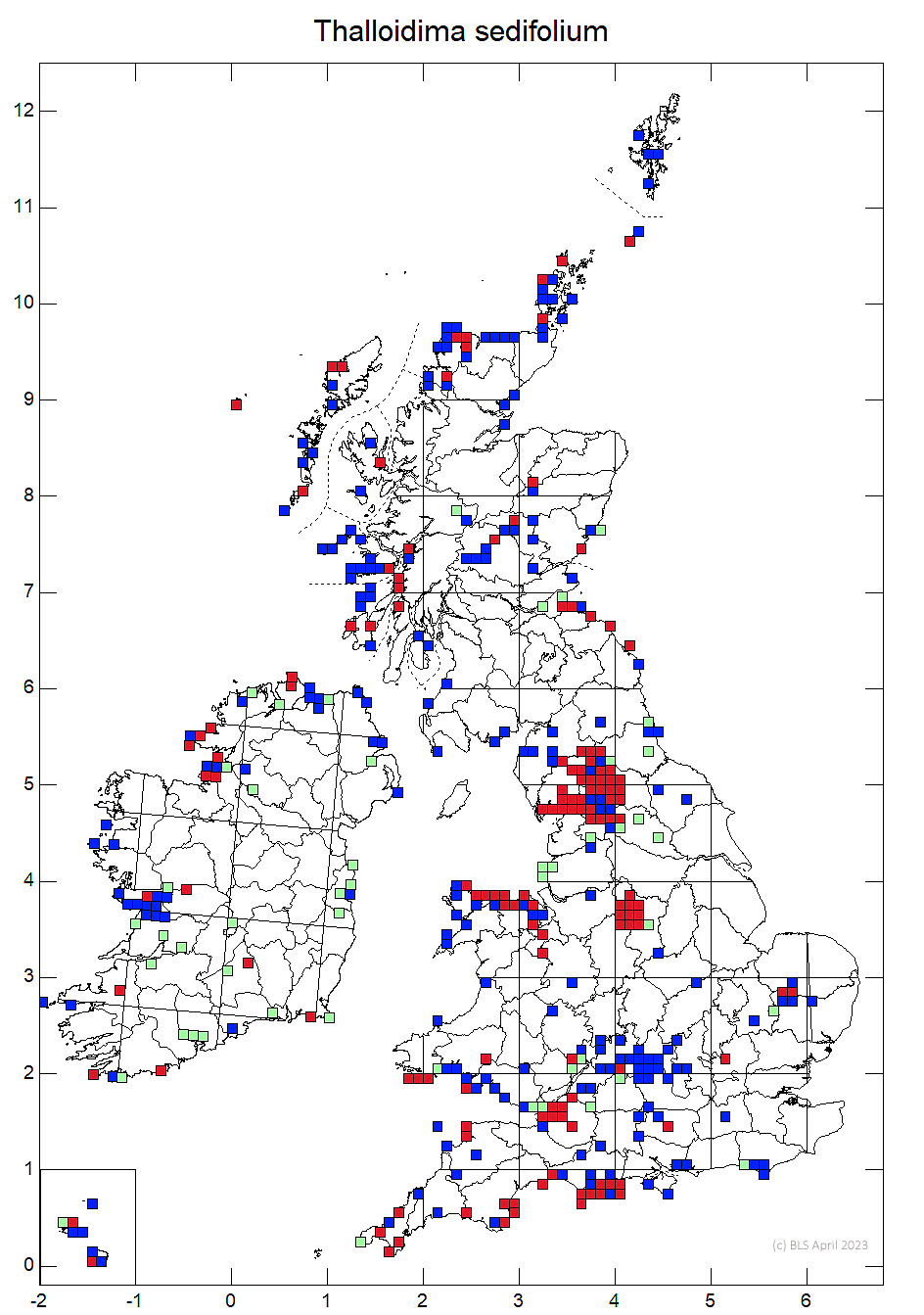This lichen consists of a number of small (up to 3mm diam.) somewhat convex lobes scattered or touching one another. Though the upper surface is brown to olive green it is usually covered in a white to bluish pruina so the lobes appear whitish. The spore producing structures are black dish-shaped apothecia. They can be pruinose but are usually less pruinose than the thallus lobes on which they are formed. Beginning somewhat concave they often grow to become convex. T. aromatica lacks pruina on its lobes. Other species in this genus with which it can be confused are unlikely to occur in Wales.
Photo: R.G. Woods
It is not infrequent on calcareous sandy soil in, for example, the cracks between limestone rocks and on rock ledges in coastal areas. It also occurs amongst bryophytes on shell-rich sand dunes once accretion stops and before larger plants can invade. Many sites are rabbit grazed. It is noted on old lime mortared walls by Pentecost (1987) in NW Wales and may occur in this habitat elsewhere in Wales.
Almost all records are from coastal areas, with the greatest concentration of records on coastal limestone in Glamorgan, Pembroke and Caernarfon and from a number of sand dunes systems. It is very rare on inland limestone.
The loss of mobility in some dune systems my eventually lead to the loss by natural succession of the fixed early stage grey dune habitat favoured by this species. The reduction of rabbit grazing pressure due to the effects of disease may also affect some sites by allowing the growth of higher plants. The spread of locally alien species such as sea buckthorn may also reduce the area available. Eutrophication leading the it being out competed by higher plants may also pose a threat in some areas. Limestone quarrying may have destroyed some sites whilst the abandonment of some quarries may have created new habitat. Cotoneaster colonisation of large areas of limestone in Wales poses a significant threat but without a monitoring programme the loss cannot be measured. Woods & Coppins (in press) accord it a threat status of Least Concern for Britain and Woods (in press) a similar threat status for Wales. The reasons for its inclusion in the British BAP list and consequently on Sect 42 in Wales are not clear. Old lime mortared walls are now rare and most stonewalls are pointed with unsuitable Portland cement. This may be causing a significant decline in parts of SE England.
Pentecost, A (1987). The Lichen Flora of Gwynedd. Lichenologist 19: 98-164.
- Log in to post comments

